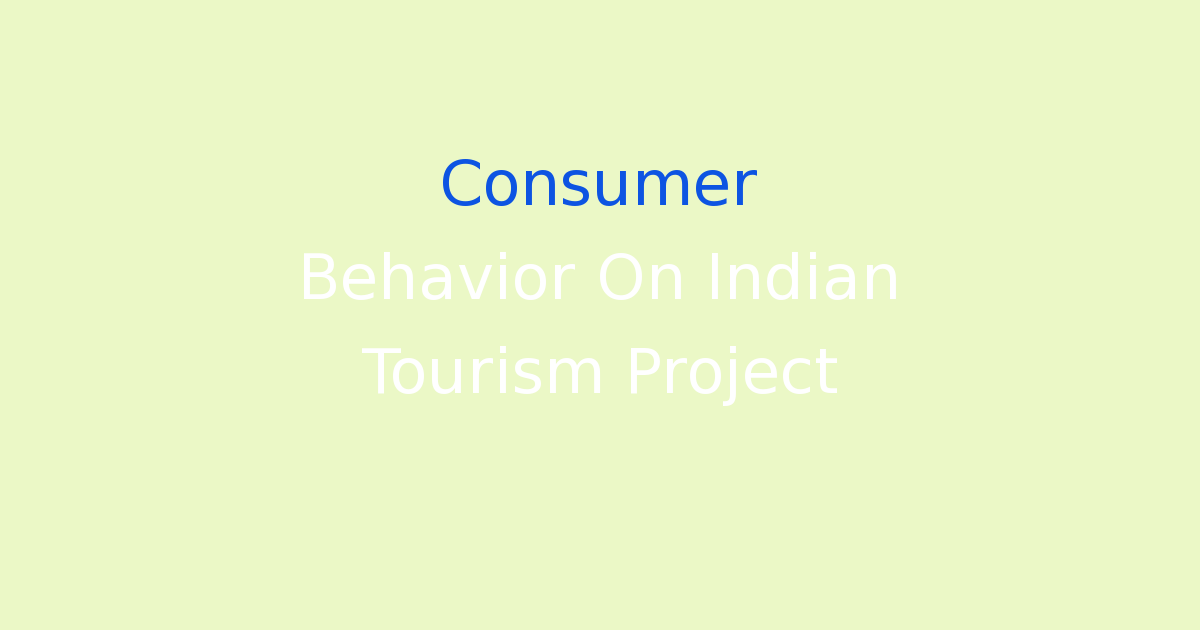Study on consumer behavior in Indian tourism.
Consumer Behavior on Indian Tourism Project
Introduction
India is a land of diverse cultures, traditions, and landscapes, making it a popular tourist destination for both domestic and international travelers. The tourism industry in India plays a significant role in the country’s economy, contributing to job creation and revenue generation. Understanding consumer behavior in the tourism sector is crucial for businesses to target their marketing efforts effectively and provide a personalized experience for travelers.
Problem Statement
Despite the growth of the tourism industry in India, there are still challenges that businesses face in understanding and predicting consumer behavior. Many tourism companies rely on traditional market research methods, such as surveys and focus groups, which may not provide accurate and real-time insights into consumer preferences and trends. This can lead to ineffective marketing strategies and a mismatch between products and consumer expectations.
Existing System
The existing system of understanding consumer behavior in the Indian tourism sector involves collecting data through surveys, interviews, and customer feedback forms. This data is then analyzed to identify demographic information, travel preferences, and spending patterns of consumers. However, this approach can be time-consuming and may not capture the full range of factors influencing consumer behavior, such as social media influence and peer recommendations.
Disadvantages
Some of the disadvantages of the existing system include:
- Limited scope of data collection
- Inaccurate and outdated information
- Lack of real-time insights
- Inability to predict consumer trends
Proposed System
The proposed system for understanding consumer behavior in the Indian tourism sector involves leveraging data analytics and machine learning algorithms to analyze large volumes of data from various sources, such as social media, travel websites, and mobile apps. This data can provide real-time insights into consumer preferences, behavior patterns, and sentiment analysis, allowing businesses to personalize their marketing strategies and enhance the overall travel experience.
Advantages
Some of the advantages of the proposed system include:
- Real-time insights into consumer behavior
- Personalized marketing strategies
- Improved customer satisfaction and loyalty
- Ability to predict consumer trends and preferences
Features
The proposed system will have the following features:
- Data analytics tools for processing large volumes of data
- Machine learning algorithms for predictive modeling
- Social media monitoring for sentiment analysis
- Personalization tools for targeted marketing campaigns
Conclusion
In conclusion, understanding consumer behavior in the Indian tourism sector is essential for businesses to stay competitive and meet the evolving needs of travelers. By adopting a data-driven approach and leveraging advanced technologies, such as data analytics and machine learning, tourism companies can gain valuable insights into consumer preferences and behavior patterns. This can lead to more personalized marketing strategies, improved customer satisfaction, and a sustainable growth in the tourism industry.

